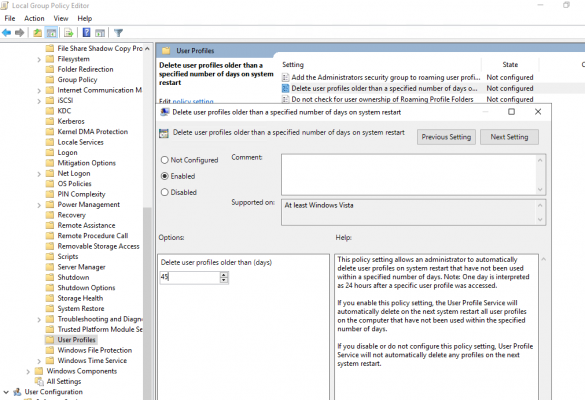OPTION ONE
To Delete User Profile of an Account in Advanced System Properties
1. If you haven’t already, you will need to make sure that the user account (ex: “Example”) you want to delete the profile of is signed out before continuing.
2. Press the Win+R keys to open Run, type SystemPropertiesAdvanced.exe , and click/tap on OK to open advanced System Properties.
3. Click/tap on the Settings button under User Profiles . (see screenshot below)
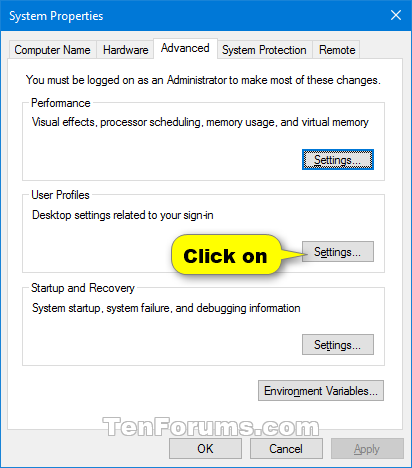
4. Select the profile of the user account (ex: “Example”), and click/tap on Delete . (see screenshot below)
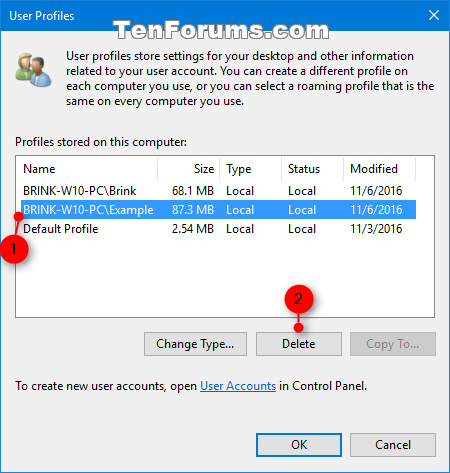
5. Click/tap on Yes to confirm. (see screenshot below)
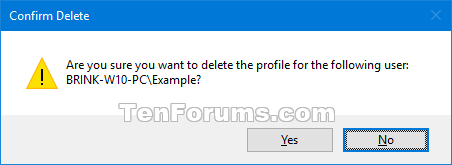
6. The profile of the user account (ex: “Example”) will now be deleted. A new profile for the user’s account will automatically be created the next time that user signs in . (see screenshot below)
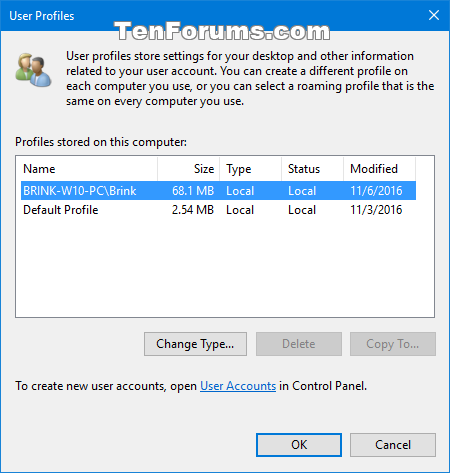
7. You can now close the User Profiles and System Properties windows if you like.
OPTION TWO
To Delete User Profile of an Account in File Explorer and Registry Editor
1. If you haven’t already, you will need to make sure that the user account (ex: “Example”) you want to delete the profile of is signed out before continuing.
2. Open the C:\Users folder in File Explorer, and delete the profile folder (ex: “Example”) of the user account you want. (see screenshot below)
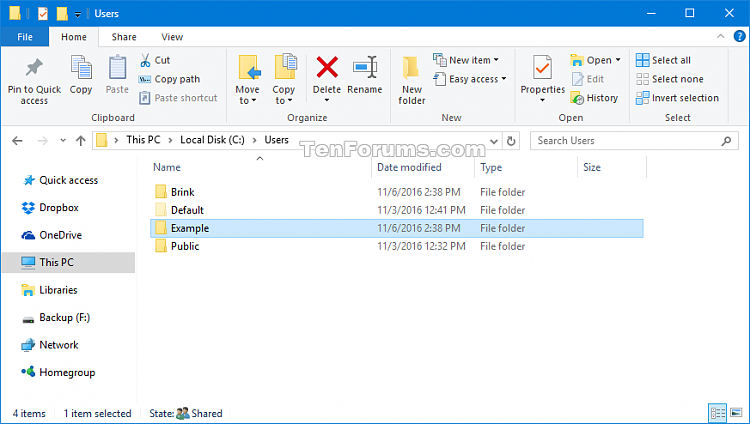
3. Click/tap on Continue to approve. (see screenshot below)
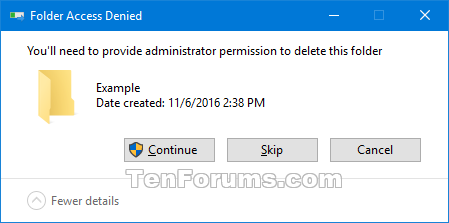
4. The user profile folder (ex: “Example”) of the account will now be deleted. You can now close File Explorer. (see screenshot below)
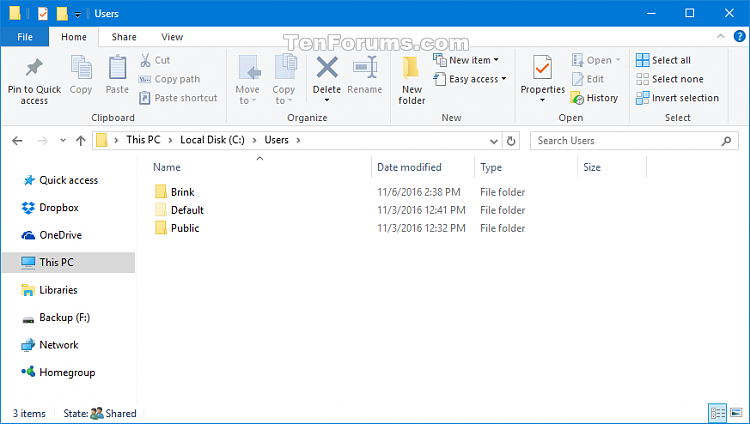
5. Press the Win+R keys to open Run, type regedit , and click/tap on OK to open Registry Editor.
6. Navigate to the ProfileList key in the left pane of Registry Editor at the location below. (see screenshot below)
 HKEY_LOCAL_MACHINE\SOFTWARE\Microsoft\Windows NT\CurrentVersion\ProfileList
HKEY_LOCAL_MACHINE\SOFTWARE\Microsoft\Windows NT\CurrentVersion\ProfileList

7. Look at the value data for the ProfileImagePath value name in the right pane of each SID key (S-1-5-21…long number) under the ProfileList key in the left pane to find the SID key that belongs to the user profile (ex: “Example”) you want to delete. (see screenshot above)
8. When you find the correct SID key (ex: "S-1-5-21… 1007 ") in the left pane, right click or press and hold on this SID key (ex: "S-1-5-21… 1007 "), and click/tap on Delete .
9. Click/tap on Yes to confirm deleting the profile’s reference in the registry. (see screenshot below)

10. The profile of the user account (ex: “Example”) will now be deleted. A new profile for the user’s account will automatically be created the next time that user signs in .
11. You can now close Registry Editor if you like.
